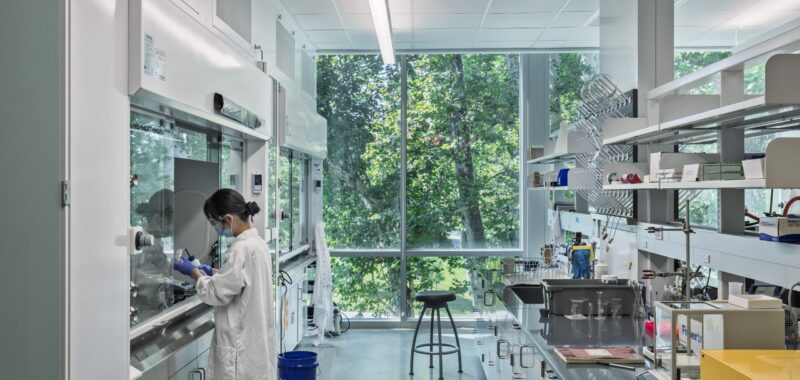Steve Barber, Senior Architect at BHDP and Sai Tummala, Director of Veterinary Services at Cincinnati Children’s Hospital navigate the new people, processes and technologies in the modern lab workspace.
Laboratory professionals have different expectations about how their workplaces—their creation spaces—should look and function today. Their priorities are primarily influenced by transformations throughout society and industry, including the evolving landscape of laboratory operations and technological advancements. Yet, the industry continues to grapple with challenges posed by the same rapid technological changes and the infusion of fresh perspectives from a more diverse workforce. As designers attempt to comply with necessary adaptations within lab settings to help foster productive and fulfilling environments, expectations are seemingly shifting in real time.
Insights gathered from seasoned key opinion leaders and stakeholders throughout the industry are driving a collaborative approach to laboratory design and blending visions for the necessary characteristics of future facilities. Lab spaces can be more competently developed by instituting a sense of versatility across four essential elements: people, processes, tools and technologies.
People and Processes
To an extent, the needs and desires shared by the general working population in the laboratory space can be summarized as better accommodations, operating hours and compensation. Facilities that will allow for innovations and satisfy those moving the industry forward are better equipped to meet the demands of today’s professionals. It is also necessary to take a segmented view of the industry through the lens of the pharmaceutical and academic sectors to be truly universal. This helps designers address some of the nuances related to the sciences and work within each.
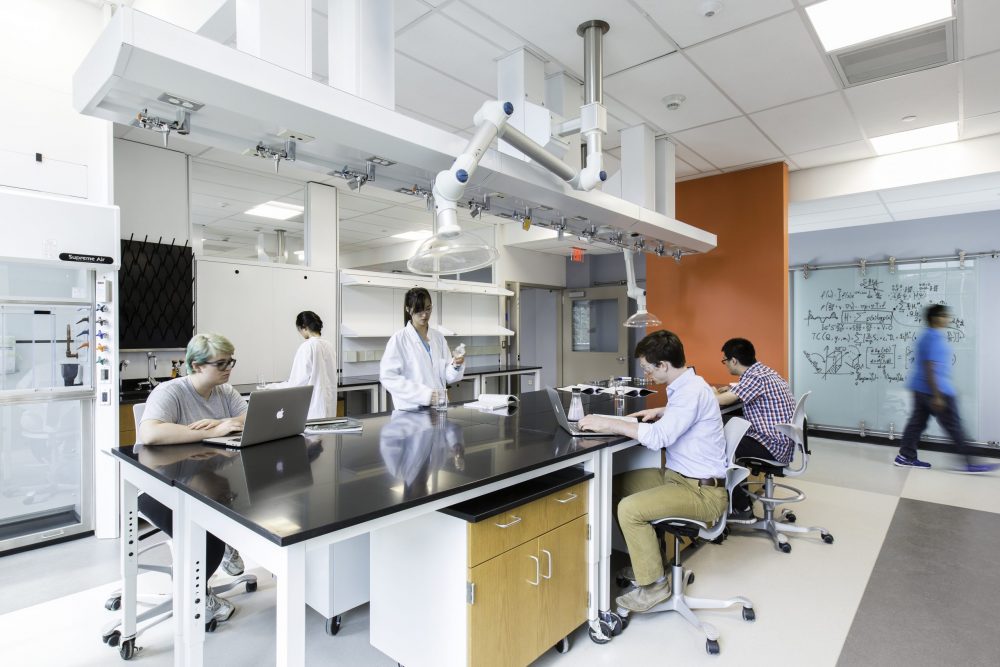
The science and discovery lab looks quite different from clinical research or translational labs. A major drawback on the clinical side is point-of-care testing or point-of-care research analysis for surgeons in the operating room environment. The potential to conduct testing on samples during surgery can dramatically alter how to treat patients.
Increasing the speed of workplace communication can improve the industry’s many pain points. Researchers want information requests returned to them quickly and an opportunity to access them often. These pose logistical design challenges, particularly related to typical IT infrastructure that lacks bandwidth and adaptability for image-capturing and retrieval processes. They also produce significant opportunities for better bioinformatics and analytics capabilities.
Pharmaceutical companies are valued based on how they accelerate communication and reduce research time to move drugs into the marketplace more quickly. Lab design and flow can aid this process. For example, CAR T-cell therapy cells can be taken from the patient to change and reprime antigens in the lab and reinfuse them into the patient. There’s an accessibility struggle when these facilities are not close to the patient. As such, it’s essential for designers to strategize the positioning of labs for facilities focused on basic discovery to offer the ability to bring animal models or clinical samples closer to the lab to assist workflow. There is an emphasis on scaling up in a stem cell production lab so patients can provide samples to the lab on arrival and be re-infused within the lab the next day.
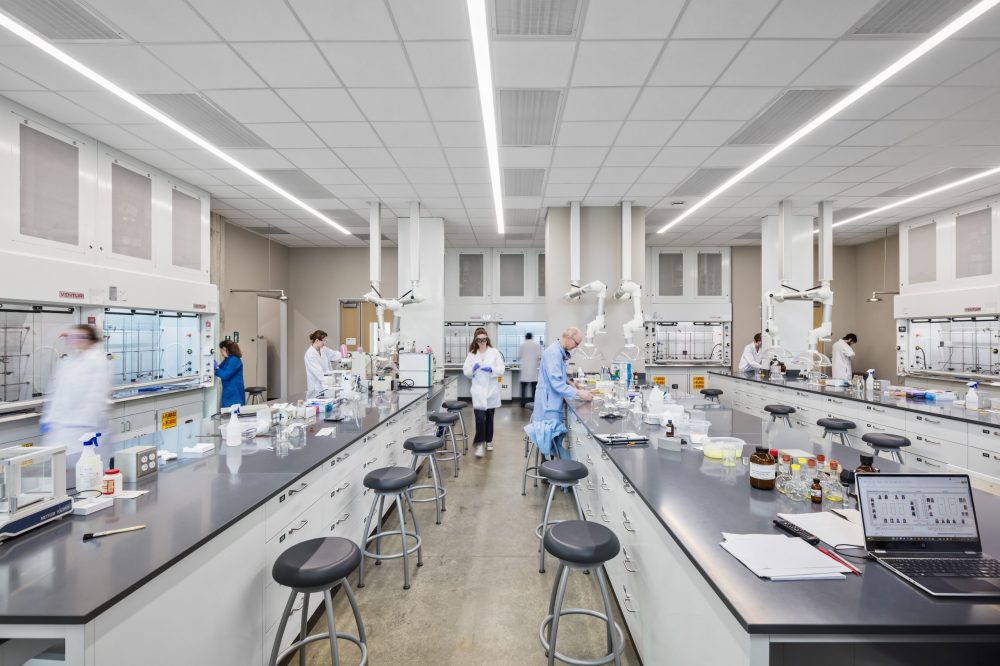
Privacy is also more highly guarded today and will continue to gain importance in lab configuration. What used to be communal group settings are now spaces to allow more individual privacy. Designing facilities that are inviting to various types of workforce personalities is paramount. It’s also essential to build design flexibility into plans to make updates without much lead time and a significant financial investment. Ideally, a balance will exist between the creation of spaces that foster collaboration and enough individual space to offer appropriate privacy when needed.
Shared labs will be synonymous with shared equipment utilization to foster collaboration, where individual assay development and tasks requiring in-depth attention can be better served with private, demarcated workspaces for respective individuals. As with individual personality types, it’s essential for workspaces to be adaptable for all styles and tasks, such as the potential to deliver and create results from a space that allows careful focus and offers privacy for those with an introverted type of personality.
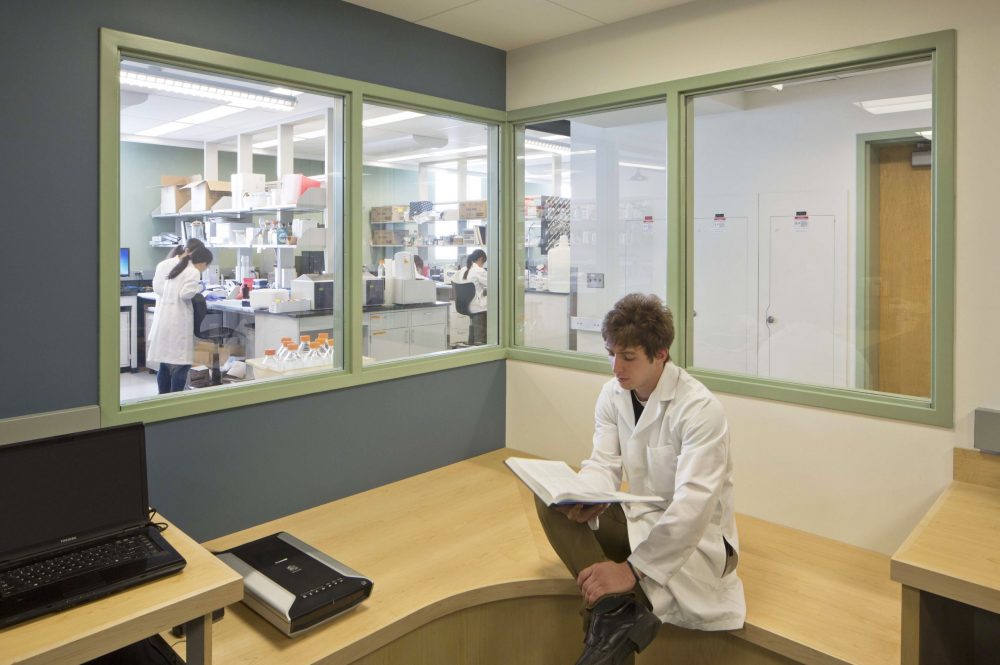
Tools and Technology
The commitment to designing an infrastructure that offers abundant digital tools, with artificial intelligence (AI), cloud connectivity and automation as central components, is increasingly important. Today’s lab environment requires a layout that provides technology throughout the space. For example, facilities can install smart devices throughout the facility to utilize AI and predictive models that simulate information and explain concepts to professionals. It’s vital for AI to be intuitive enough to identify the validity of a hypothesis before an experiment begins. Not knowing the off-target effects that could be realized in specific Phase 2 and Phase 3 testing upfront could result in significant costs and valuable time.
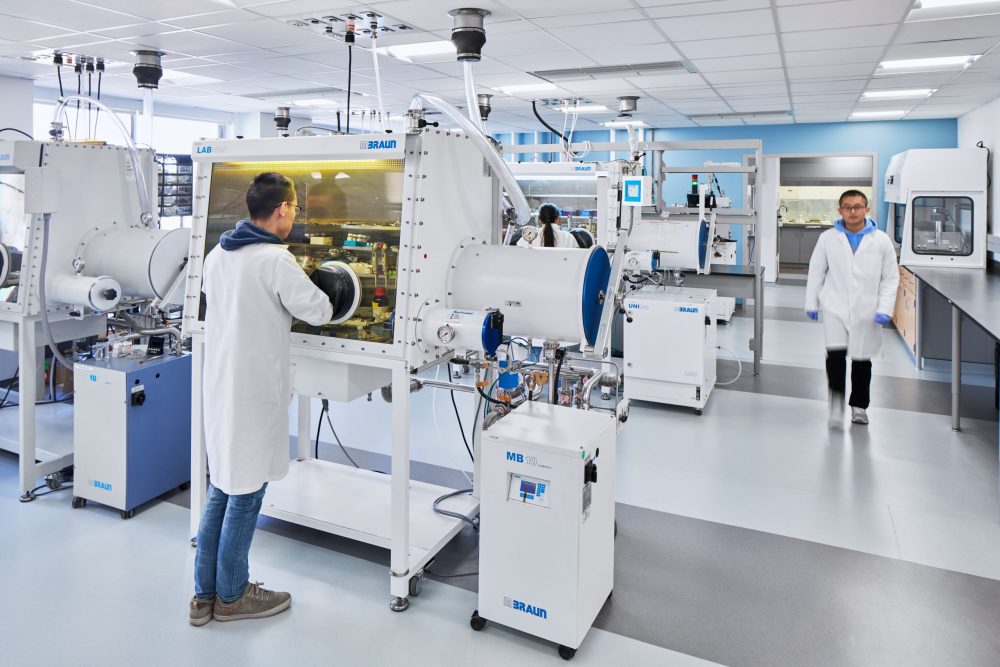
Relying on technology to schedule the sharing of field equipment is another important trait, as is designing a layout to strategically place tools for multiple individuals to access. Conducting mundane tasks in the place of analyzing data is a poor use of a physician’s time. Investing in management systems that can track information improves efficiency, but these tech innovations come at a premium. Automation integration, in particular, is an expensive up-front cost, but long-term benefits include time savings that allow for more innovative collaboration.
There’s increased concern about facility lighting due to findings that certain types of light spectrum impact mental health. Instead of fluorescent lighting, full-spectrum lights attuned to the time of day and able to adapt their brightness according to the spectrum are a more safeguarded approach.
Versatility within Lab Spaces
The infusion of fresh perspectives from an expanding workforce continues to shape priorities and adaptations within lab settings. Among these is the acceptance of gender identification and an emphasis on placing people in workplaces that avoid implicit biases. Society has progressed with respect for different and diverse ideas at the forefront of today’s typical work environment behavior. The mentality of expecting professionals to simply “fit the mold” is outdated.
Today, the mold is to fit the individual. It’s vital for designers to create environments that invite more perspectives as the industry trends toward allowing professionals to be more open and nonconforming to the status quo. Lab settings remain populated by highly intellectual staff with diverse mentalities that thrive in settings where intellectual diversity is present. More personalized incentives are the new standard.
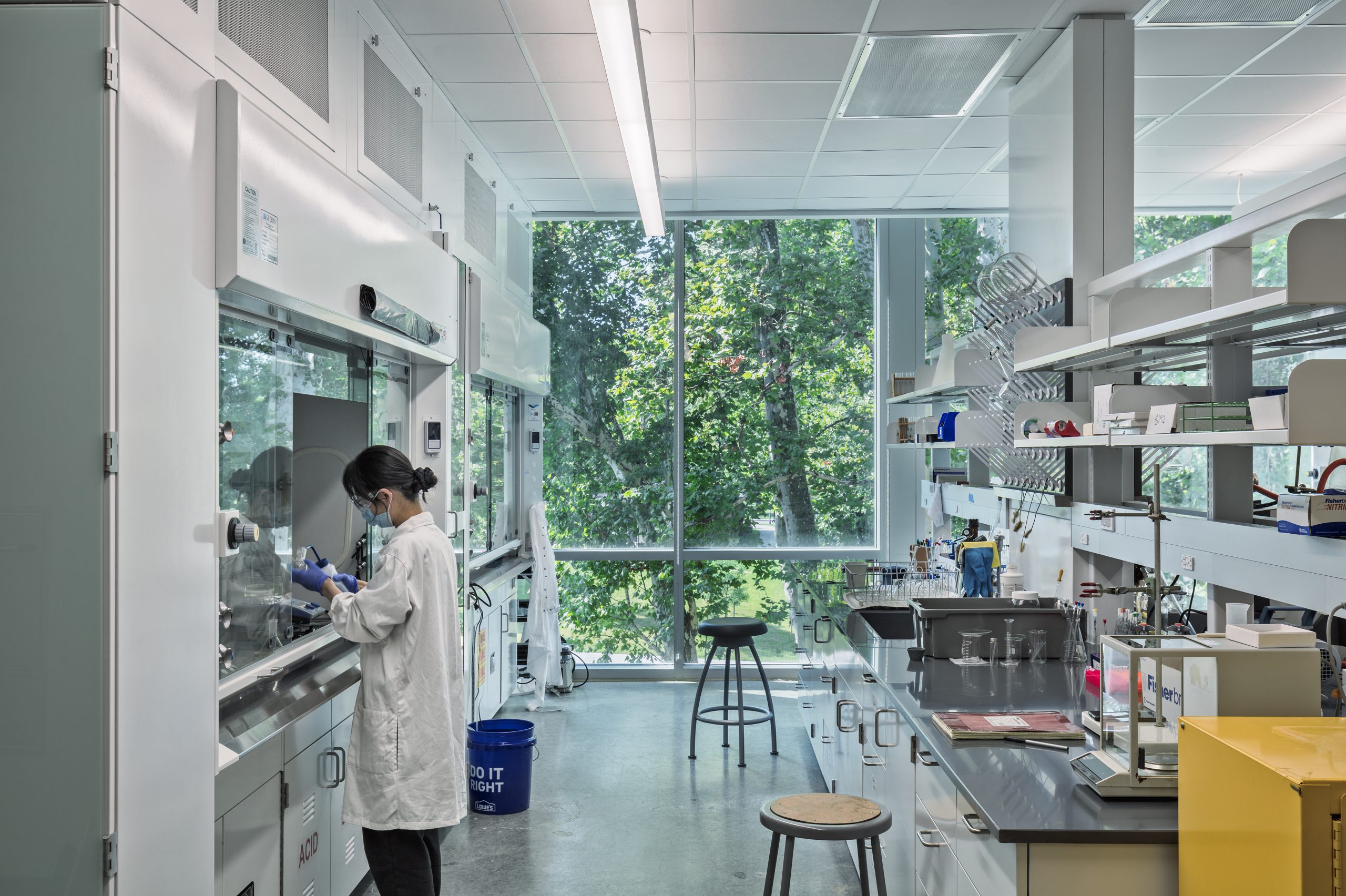
Overcoming Design Challenges
Future labs will not be based on simple designs. To gain more efficiencies, it’s incumbent upon those who design labs to understand that improved operational flow can mitigate many existing challenges and that building flexibility into labs can reduce or eliminate the need for additional construction in the event of directional changes. It’s critical for decision-makers and others in leadership to understand the scope of their company’s operations and how they correlate to laboratory design.
The optimal design begins by understanding the movement of people and the flow of ideas to create collaboration opportunities while allowing privacy when necessary.
The discovery and science landscapes are evolving. When comprehensive investments are made at the design onset, the orchestration of people, processes, tools, and technologies is more likely to be improved.

